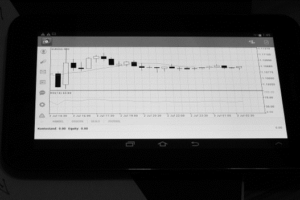
The New York metro area’s 2013 median household income ($65,786) was not statistically different from 2010, the first full year after the last recession, when it was $65,976 in 2013 dollars, according to new statistics released today from the U.S. Census Bureau’s American Community Survey, the nation’s most comprehensive data source on American households.
Income is one of more than 40 topics covered in the American Community Survey. The full set of social, economic, housing and demographic statistics can be found on census.gov. These include topics such as marital status, educational attainment, language spoken, ancestry and more.
On Sept. 16, the Census Bureau released national-level income and poverty statistics as well as national and state-level health insurance statistics. Today’s American Community Survey release includes statistics for these topics for all 50 states, the District of Columbia, Puerto Rico, every congressional district, every metro area, and all counties and places with populations of 65,000 or more. Two new reports examine these topics: Household Income: 2013 and Poverty: 2012 and 2013.
Highlights for the New York metro area include:
2013 Income
- Median household income: $65,786, was not statistically different from 2010 ($65,976).
- Median earnings for male full-time, year-round workers: $56,590.
- Median earnings for female full-time, year-round workers: $48,269.
- With Food Stamp/SNAP benefits: 14.0 percent; up from 12.0 percent in 2010.
2013 Poverty
- Below poverty level: 14.6 percent of people. This was up from 13.8 percent in 2010.
- Children below poverty level: 20.6 percent in 2013. This was up from 19.5 percent in 2010.
2013 Health Insurance
- Percent insured with private health insurance: 64.7 percent. This was down from 65.3 percent in 2010.
- Uninsured: 12.5 percent. This was down from 13.6 percent in 2010.
- Uninsured under 138 percent of the poverty level (and eligible for coverage by Medicaid in states that decided to expand Medicaid eligibility): 20.0 percent. Under the Affordable Care Act, states have the option of expanding Medicaid eligibility to those with incomes at or below 138 percent of the poverty threshold.
- Uninsured at 200 percent of poverty threshold and over: 9.1 percent.
Additional Statistics Released by the Census Bureau
- Annual state-to-state migration data tables (not embargoed)
- Annual same sex data tables (national level only, not embargoed)
Upcoming American Community Survey Releases
- 2011-2013 statistics for all areas with populations of 20,000 or more: Oct. 23.
- 2009-2013 statistics for all areas regardless of size, down to the block group level: Dec. 4.
About the American Community Survey
The American Community Survey provides a wide range of important statistics about all communities in the country. The American Community Survey gives communities the current information they need to plan investments and services. Retailers, homebuilders, police departments, and town and city planners are among the many private- and public-sector decision makers who count on these annual results. Visit the Stats in Action page to see some examples.
Ever since Thomas Jefferson directed the first census in 1790, the census has collected detailed characteristics about our nation’s people. Questions about jobs and the economy were added 20 years later under James Madison, who said such information would allow Congress to “adapt the public measures to the particular circumstances of the community,” and over the decades allow America “an opportunity of marking the progress of the society.”
Note: Statistics from sample surveys are subject to sampling and nonsampling error. All comparisons made in this report have been tested and found to be statistically significant at the 90 percent confidence level, unless otherwise noted. Please consult the tables for specific margins of error.
For more information, go to <http://www.census.gov/acs/www/data_documentation/documentation_main/>;. See <http://www.census.gov/acs/www/data_documentation/2013_release/>; for more information on changes affecting the 2013 statistics. See <http://www.census.gov/acs/www/guidance_for_data_users/comparing_2013/>; for guidance on comparing 2013 American Community Survey statistics with previous years.






